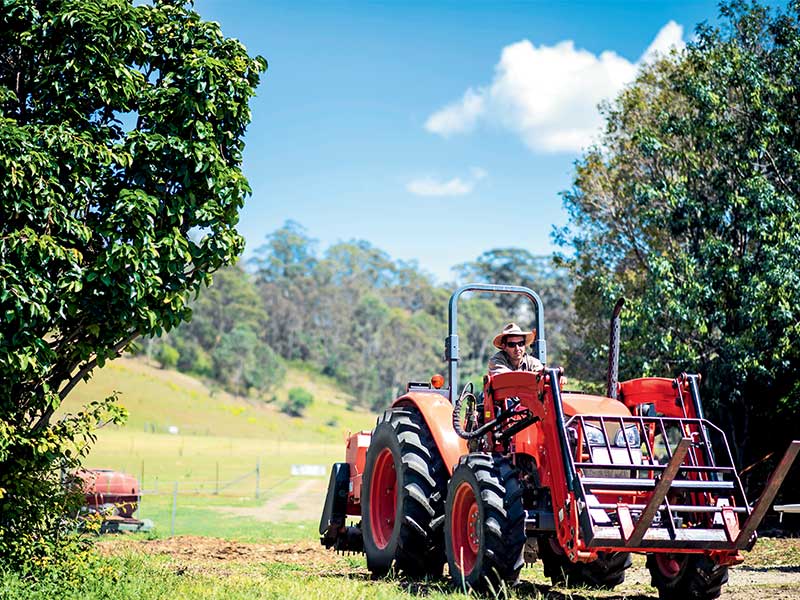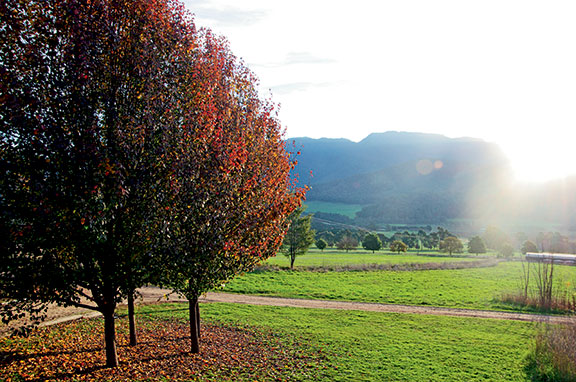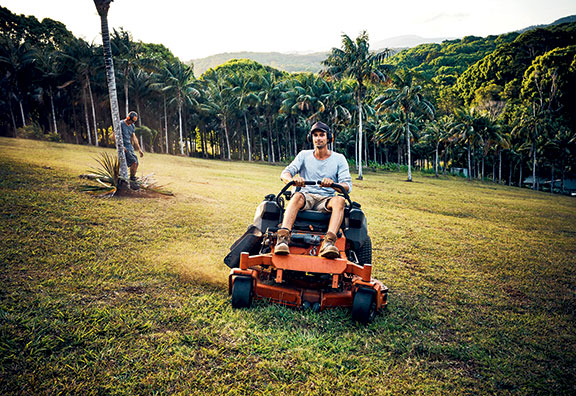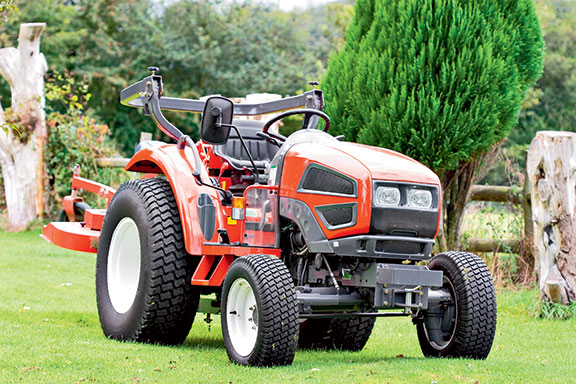Harrison Hunkin speaks to industry analyst Alan Kirsten to get his top 10 tips for small acreage farmers
 |
|
Tractors between 20hp and 60hp are most common on small-acreage farms
|
If we had one piece of advice for the small acreage farmers out there, it’s “do your research”.
That’s what Agriview managing director Alan Kirsten tells us when we speak to him about the industry and all the dos and don’ts of purchasing agricultural equipment suited for lifestyle farming operations.
Small-acreage farmers – also referred to as start-up or lifestyle farmers – are commonly professionals who work at their main job during the week and retire to the comfort of their property come weekends.
And, like the rest of the agriculture machinery market, the small-acreage sector is thriving. (Click here for latest industry report.)
“When I talk about the compact tractor market or the lifestyle market, I really look at machinery sales from the 20-60hp range,” Kirsten says. “The industry is doing well.”
More than 4600 tractors in the 20-60hp range were sold in 2017, while the average over the past five years was just under 4300.
“The market is doing well; it’s been quite solid for the last five to six years now, and it’s great for the industry,” Kirsten adds.
Here are his top 10 tips for small-acreage farmers:
 |
|
The size of lifestyle properties has increased over the years, like this one in Porepunkah, Victoria
|
Do your homework!
The thing with farm machinery is there are a lot of brands and machines suited to all sorts of work, Kirsten says.
“There are over 19 tractor brands available between 20 and 60hp today, and, of that, there are over 170 models on offer. So there is an enormous amount of choice for the farmer, which only reinforces the fact that you need to do your homework and ask questions,” he says.
Connect with your dealer
Don’t be intimidated by your dealer, Kirsten emphasises. History has shown that heading down to your local dealer can be a daunting task for lifestyle farmers, but we assure you they are here to help!
“If you’re a hobby farmer with no background in agriculture, it can be quite intimidating when looking to buy machinery,” Kirsten says. “You don’t know anything about it – you don’t know a good brand from a bad brand, what specifications, what sort of gearbox.
“It can be very intimidating for people who don’t understand what machinery is; dealers have to provide a lot of information.”
Buy on a weekend
Dealers have combatted the above perception by opening on weekends, when the big farmers traditionally don’t buy gear.
“Sunday isn’t the day the farmer goes and looks for machinery, so the lifestyle farmer isn’t as intimidated when looking for machinery,” Kirsten says.
Buy a package
When asked what the essential machines for a small-acreage starter pack are, Kirsten is quick to deliver his thoughts on the best combination.
Today, most compact tractors are being sold with a front-end loader and three-point linkage, so Kirsten thinks every small-acreage or hobby farmer needs a tractor with a loader – definitely a slasher and a grader blade.
“That would be the basic start,” he says. “It’s not just the tractor anymore, now it’s the tractors and the mower plus all the implements. There are a lot of products on the market to satisfy every prospective customer.”
 |
|
ENTER THE IMAGE CAPTION HERE
|
Consider a mower
“We are seeing farmers with a range of machines for an array of jobs around the property,” Kirsten says.
“So they’ll have a slasher to do their main paddock work and fire control, but around the house or in large gardens, these farmers will invest in a dedicated mowing machine, which could be a conventional out-front or a zero-turn mower.”
Bargain with your dealer
Kirsten believes there are savings to be made by buying a small-acreage machinery package if done correctly.
“I would be bargaining hard with a dealer,” Kirsten says. “Tell the dealer that you want a machine for X amount, but you want all of these implements – what’s his best deal?” he says. “And I think there are savings up to 10 per cent to be made if you go down that path.”
Consider higher-horsepower tractors
Property sizes have gotten bigger for the lifestyle farmer over the years, creating a trend for higher-horsepower machines. Embrace it!
“Over the last five or six years we’ve seen the move up to higher-horsepower tractors as lifestyle properties have gotten bigger,” Kirsten says. “And, with that increase in size, comes an increased demand for a larger machine.
“The bulk of the demand is for 20-30hp tractors, but you’ll find that the 30-40hp range is increasing, as is the 40-60hp,” he adds.
“The size of lifestyle properties has increased over the years, hence the increased demand for higher-horsepower and larger machines.”
“So that’s the landscape: we started a long time ago on small hobby style farms, now they are a larger farm altogether.”
Understand what you want to do with your property
“You have to do your homework,” Kirsten emphasises again. “And you need to talk to your dealers and find out what best suits your needs for your lifestyle.”
Despite advising farmers to consider higher-horsepower tractors, Kirsten says biggest is not always best, so don’t get carried away with specs you don’t need.
“You might be offered a 60hp tractor with all the bells and whistles, but do you need it?” he says. “You need to ask yourself how many times will you use it a month, and what your primary use for it is.”
 |
|
The choice of attachments is important
|
Consider dealer support
You should be switched on in regards to your dealer’s parts and support service, Kirsten says.
“It’s one of the first things I would tell a farmer – you need to look at the service that you will be provided.”
Be wary of remanufactured machines
Kirsten highlights the risk of remanufactured machines; this is the process of purchasing a second-hand product overseas that isn’t supported in Australia by parts and service.
“Be careful of remanufactured products,” he warns. “There are a lot of second-hand products that come from overseas, are put through a remanufacturing process, and then arrive here.
“Now the problem is that some of those products are well-known brands but are not necessarily supported here in Australia in terms of parts and service,” Kirsten explains. “So if it hasn’t been sold by the Australian distributor, it could lead to a problem.
“I know there have been a few well-known brands over the years that have struggled with the fact there have been a lot of remanufactured products coming into the country, and they face the problem with not being able to supply parts or service because they haven’t brought that model into the country.”

